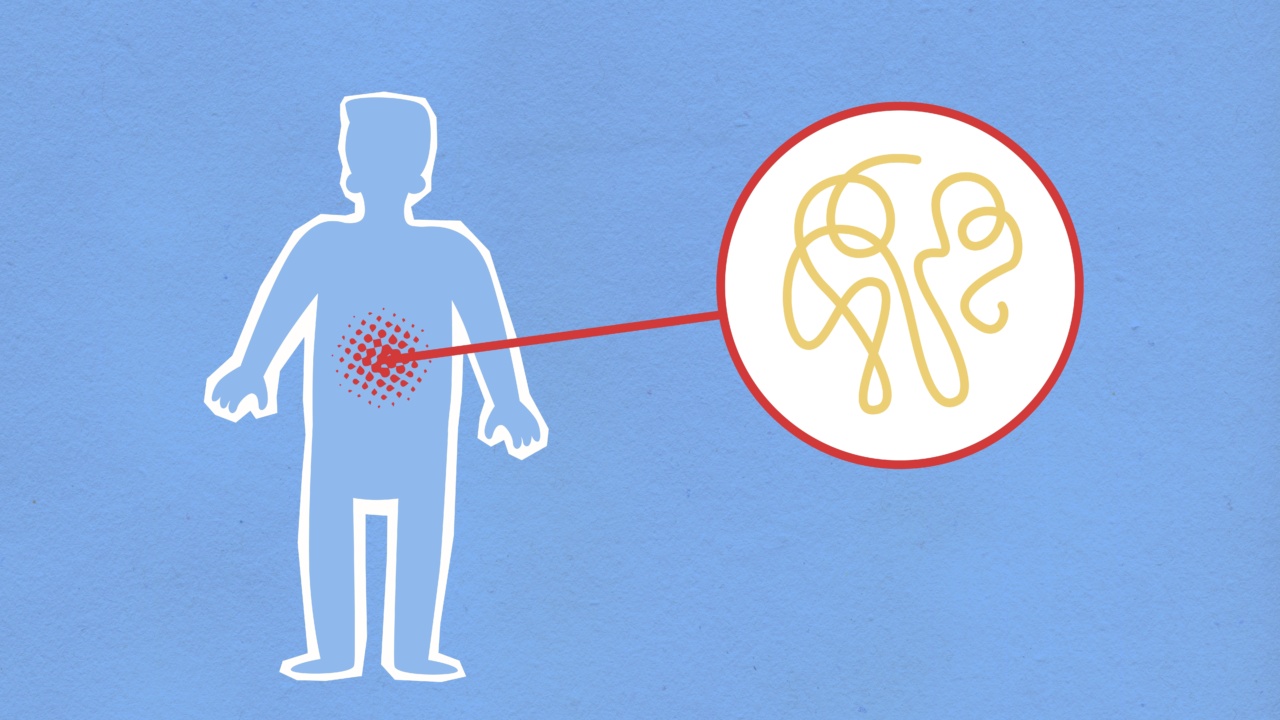Stomach pain can be a debilitating experience that affects one’s daily life. One of the best ways to address stomach pain is by identifying its source.
While it is always best to consult a medical professional to determine the cause of stomach pain, there are visual cues that can provide important clues.
1. Upper Abdominal Pain
Pain in the upper abdominal area can be an indication of several digestive issues such as acid reflux, peptic ulcers, or gastritis. A burning sensation after a meal is an indication of acid reflux.
Severe pain after eating is indicative of peptic ulcers, which are open sores that develop on the stomach lining or the small intestine. Gastritis, which is inflammation of the stomach lining, can also cause upper abdominal pain.
2. Lower Abdominal Pain
Lower abdominal pain can be associated with various gastrointestinal issues such as irritable bowel syndrome, Crohn’s disease, diverticulitis, or appendicitis.
Irritable bowel syndrome (IBS) is characterized by recurrent abdominal pain and discomfort associated with bowel movements. Crohn’s disease is a chronic inflammatory disease affecting the gut. Diverticulitis is an inflammation of the diverticula, which are bulging pouches in the colon.
Appendicitis is inflammation of the appendix, which is a small, finger-like extension attached to the large intestine.
3. Pain After Eating
Pain after eating can be a sign of various conditions such as gallstones, pancreatitis, or ulcers. Gallstones are hard deposits that can form in the gallbladder, causing pain in the upper right abdomen.
Pancreatitis is inflammation of the pancreas, which is a gland that assists with digestion. Ulcers can form in the esophagus, stomach, or duodenum, which is the first part of the small intestine.
4. Bloating and Gas
Bloating and gas can be signs of indigestion, lactose intolerance, or celiac disease. Indigestion is discomfort or a burning feeling in the upper abdomen. Lactose intolerance occurs when the body cannot digest lactose, a sugar found in milk products.
Celiac disease is an autoimmune disorder that damages the lining of the small intestine due to an intolerance to gluten, which is found in wheat, barley, and rye.
5. Nausea and Vomiting
Nausea and vomiting can be associated with various gastrointestinal issues such as gastroenteritis, food poisoning, or a stomach virus.
Gastroenteritis is an inflammation of the stomach and intestines, causing symptoms such as diarrhea, vomiting, and abdominal pain. Food poisoning is a result of consuming contaminated food, causing symptoms such as nausea, vomiting, and diarrhea. A stomach virus can cause nausea, vomiting, and diarrhea.
6. Blood in Stool
Finding blood in your stool can be an alarming experience. Blood in stool can be an indicator of several gastrointestinal conditions such as hemorrhoids, diverticulitis, or inflammatory bowel disease.
Hemorrhoids are swollen veins in the rectum or anus, causing rectal bleeding. Diverticulitis is inflammation of the diverticula, which can cause rectal bleeding. Inflammatory bowel disease (IBD) is a group of inflammatory conditions of the colon and small intestine.
7. Constipation
Constipation can be an indication of several gastrointestinal issues such as irritable bowel syndrome, fecal impaction, or colon cancer. Irritable bowel syndrome can cause constipation, diarrhea, or alternating episodes of constipation and diarrhea.
Fecal impaction is a blockage of the large intestine by a large mass of stool. Colon cancer can cause constipation, bleeding, and other digestive issues.
8. Diarrhea
Diarrhea can be associated with various gastrointestinal issues such as food poisoning, irritable bowel syndrome, or inflammatory bowel disease.
Food poisoning is a result of consuming contaminated food, causing symptoms such as diarrhea, vomiting, and abdominal pain. Irritable bowel syndrome can cause constipation, diarrhea, or alternating episodes of constipation and diarrhea.
Inflammatory bowel disease is a group of inflammatory conditions that affect the colon and small intestine, causing diarrhea and other digestive symptoms.
9. Loss of Appetite
Loss of appetite can be an indicator of several gastrointestinal issues such as malabsorption, liver disease, or gallbladder disease. Malabsorption occurs when the body cannot properly absorb nutrients from food.
Liver disease can cause a loss of appetite due to changes in metabolism. Gallbladder disease can cause a loss of appetite due to inflammation or inflammation of the gallbladder.
10. Weight Loss
Unexplained weight loss can be an indication of various gastrointestinal issues such as celiac disease, gastroesophageal reflux disease (GERD), or pancreatitis.
Celiac disease is an autoimmune disorder that damages the lining of the small intestine due to an intolerance to gluten. GERD is a condition in which stomach acid flows back up into the esophagus, causing damage over time. Pancreatitis is inflammation of the pancreas, which can cause weight loss due to poor nutrient absorption.
Conclusion
Stomach pain can be a sign of various gastrointestinal issues. Identifying the source of the pain can be challenging, but visual clues can provide important information.
If you experience stomach pain, it is important to seek medical attention to determine the underlying cause.



























